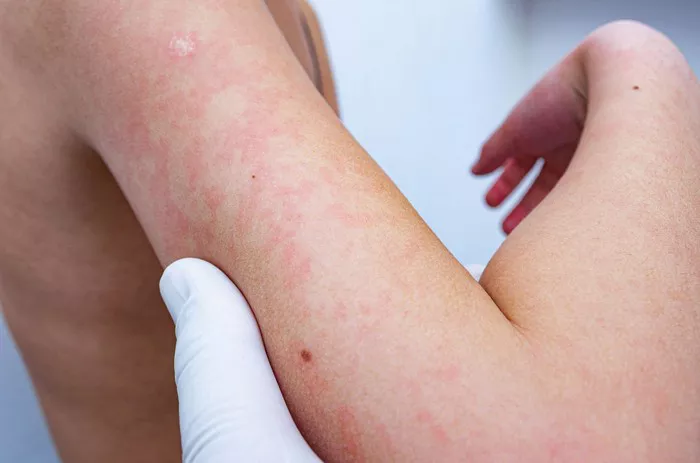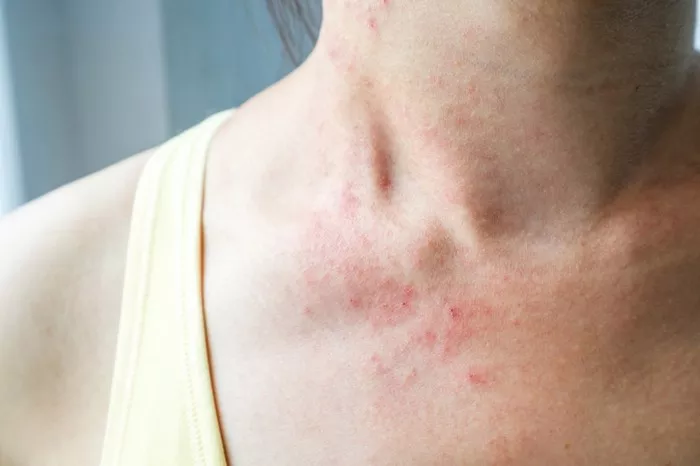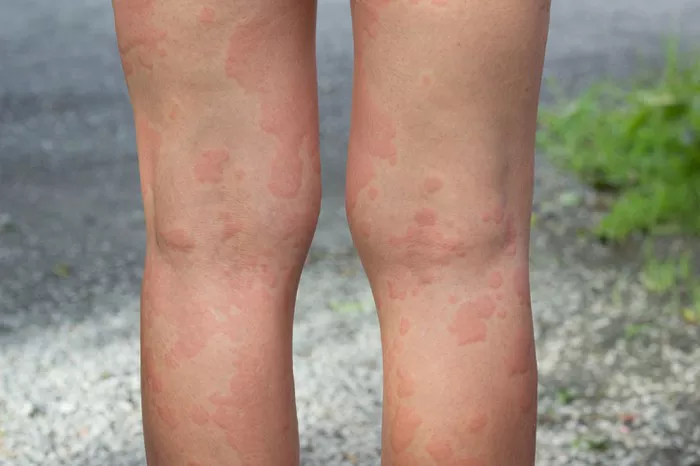Heat hives, medically known as cholinergic urticaria, are a common and often uncomfortable skin condition triggered by an increase in body temperature. Characterized by the sudden appearance of small, itchy bumps on the skin, heat hives can significantly impact an individual’s quality of life. While there is no definitive cure for heat hives, various management strategies and treatment options exist to alleviate symptoms and improve overall well-being.
Understanding Heat Hives:
Before delving into potential treatments, it’s essential to grasp the underlying mechanisms of heat hives. Cholinergic urticaria occurs when the body’s core temperature rises, leading to the release of histamine and other chemicals from mast cells in the skin. This release causes localized inflammation, resulting in the characteristic rash and itching associated with heat hives.
While the exact cause of cholinergic urticaria remains unclear, several factors may contribute to its development. These include genetics, environmental triggers, and underlying health conditions such as allergies or autoimmune disorders. Furthermore, emotional stress and intense physical activity can exacerbate symptoms in susceptible individuals.
Treatment Approaches:
Managing heat hives typically involves a combination of lifestyle modifications, symptomatic relief, and, in some cases, medical intervention. Although there is no one-size-fits-all solution, healthcare professionals often recommend the following approaches to alleviate symptoms and improve comfort:
1. Avoidance of Triggers:
Identifying and avoiding triggers that exacerbate heat hives can significantly reduce symptom severity. Common triggers include hot weather, spicy foods, hot showers, and emotional stress. By minimizing exposure to these triggers, individuals may experience fewer flare-ups and enjoy improved symptom control.
2. Cooling Measures:
Cooling the body can help alleviate itching and discomfort associated with heat hives. This can be achieved through various means, such as staying in air-conditioned environments, applying cold compresses to affected areas, or taking cool baths. Wearing loose-fitting, breathable clothing can also aid in temperature regulation and prevent overheating.
3. Antihistamines:
Over-the-counter or prescription antihistamine medications are often used to manage symptoms of cholinergic urticaria. These drugs work by blocking the effects of histamine, thereby reducing itching, redness, and swelling associated with allergic reactions. Non-sedating antihistamines are preferred for long-term use, as they have fewer side effects and are less likely to cause drowsiness.
4. Topical Treatments:
Calamine lotion, hydrocortisone cream, or other topical corticosteroids may provide relief from itching and inflammation associated with heat hives. These products can be applied directly to affected areas as needed, but long-term use should be avoided due to the risk of skin thinning and other adverse effects.
5. Immunomodulators:
In cases of severe or refractory cholinergic urticaria, healthcare providers may prescribe immunomodulatory medications to suppress the body’s immune response. Drugs such as omalizumab, cyclosporine, or methotrexate may be considered for individuals who do not respond to conventional therapies. However, these medications carry potential risks and side effects and should only be used under close medical supervision.
6. Allergen Immunotherapy:
For individuals with underlying allergies contributing to heat hives, allergen immunotherapy may be beneficial. This treatment involves gradually exposing the body to small amounts of allergens to desensitize the immune system over time. While allergen immunotherapy is primarily used for respiratory allergies such as hay fever, some evidence suggests it may also be effective for certain types of urticaria.
7. Stress Management:
Since emotional stress can exacerbate symptoms of cholinergic urticaria, stress management techniques such as relaxation exercises, mindfulness meditation, or cognitive-behavioral therapy may be helpful. By reducing stress levels, individuals may experience fewer flare-ups and enjoy better overall symptom control.
It’s important to note that the effectiveness of treatment options may vary depending on the individual’s specific circumstances, including the severity of their condition, underlying health conditions, and response to therapy. Additionally, ongoing communication with a healthcare provider is essential to monitor progress, adjust treatment regimens as needed, and address any concerns or complications that may arise.
Future Directions:
While current treatment options can provide relief for many individuals with heat hives, ongoing research is needed to develop more targeted and effective therapies. Advances in understanding the underlying mechanisms of cholinergic urticaria may lead to the discovery of novel treatment targets and strategies. Additionally, personalized approaches that take into account individual differences in genetics, immune function, and environmental factors may enhance treatment outcomes and improve quality of life for those affected by heat hives.
Conclusion
In conclusion, while there is no cure for heat hives, various management strategies and treatment options are available to alleviate symptoms and improve comfort. By adopting a multi-faceted approach that includes lifestyle modifications, symptomatic relief, and medical intervention when necessary, individuals with cholinergic urticaria can effectively manage their condition and enjoy a better quality of life. Ongoing research and innovation hold promise for the development of more targeted and personalized therapies in the future, offering hope for continued improvement in the management of this common skin condition.


























